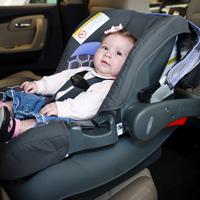Car Seat Guidance From One CPS Tech to Another

Parents learn of car seat information through a variety of trusted sources. The information may or may not reflect best practice but can grab attention because it sounds so easy to do and uses simple language. A recent article from Consumer Reports (December 10, 2015) urged parents to discontinue use of their rear-facing only “infant” (RFO) car seats at age one and move to a rear-facing convertible seat regardless of the recommendations from the manufacturer who creates, tests and markets products with both regulations and safety in mind. While there is no harm in switching a child under age two to a rear-facing convertible seat, caregivers may decide to go from rear to forward-facing much too soon as the new seat may accommodate the weight or height of a very large one-year-old or older child forward-facing. The benefit of the rear-facing direction may be lost as a forward-facing installation seems easier to accomplish. Unfortunately, there are no simple answers that cover every child, in every seat and in every vehicle. That is why CPS technicians are as busy today as we were 18 years ago.
A child in our office was able to use his RFO car seat up to 3 months before his third birthday. His weight, height and head space relative to the top of the carrier were well within the limits provided by the manufacturer. This child, Stephen, went directly from his RFO seat to a forward-facing only car seat, skipping the rear-facing convertible seat step. His family appropriately used the RFO seat that was designed to last more than one year. Stories like this are not uncommon – many of the currently available RFO seats can serve children to higher heights and weights. Manufacturers test and stand by their products based on the weight and height found in the regulation, not by age.
While Safe Kids applauds any organization that seeks to push the envelope and improve child safety in and around vehicles, technicians are taught to follow manufacturer’s instructions for the specific product used, for the child in his or her own vehicle, when they conduct a checkup or give advice at a retail outlet. We are taught to refer parents with questions to the manufacturer’s customer service associates who are trained, and often certified by Safe Kids, to provide guidance specific to their products. The curriculum has not changed – best practice still suggests using the family car seat for as long as it fits according to the specific manufacturer. Technicians should continue to guide caregivers back to their manufacturer for help when needed.
Safe Kids’ goal is to have all children in a car seat, booster or seat belt:
- selected for the weight, height and development of the child
- facing the correct direction in the vehicle, preferably rear-facing for as long as possible (up through the second year of life at a minimum in either an RFO or convertible car seat, and then forward-facing until the harness is outgrown)
- placed in a back seat
- secured properly in the harness according to the manufacturer’s instructions
- attached to the vehicle according to the vehicle AND car seat manufacturer’s instructions
These are the basics of proper car seat use and education. These guides and messages have not changed. There is no new law requiring children at age one to advance from an RFO car seat to a rear-facing convertible car seat. Let’s help parents feel good about the product they have selected, teach them to use it properly and guide them into the next safety product when the child has met the “end” criteria established by the manufacturer.
